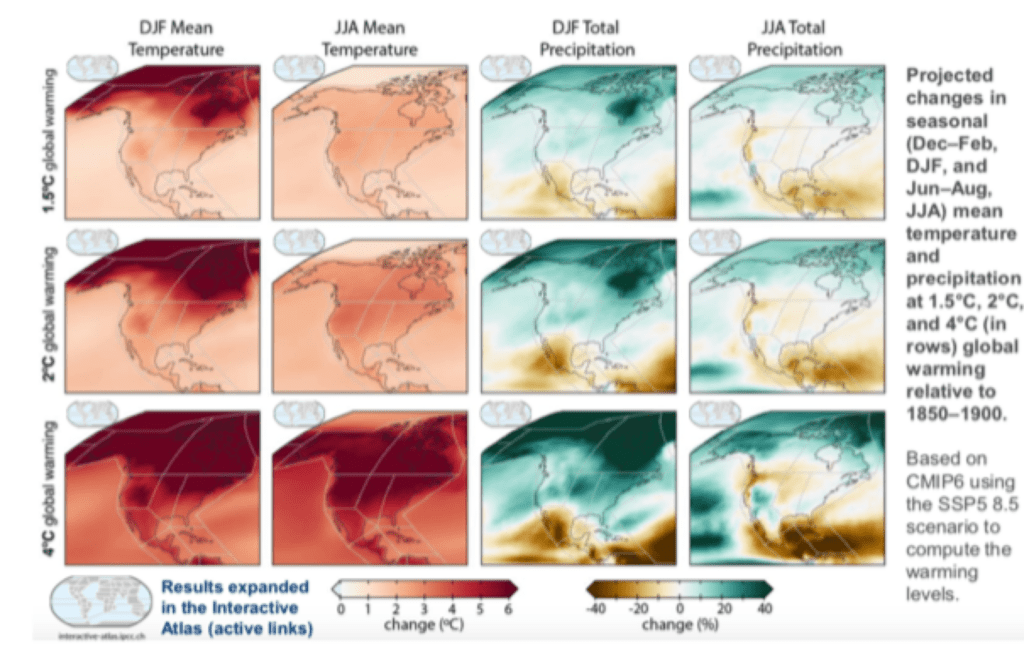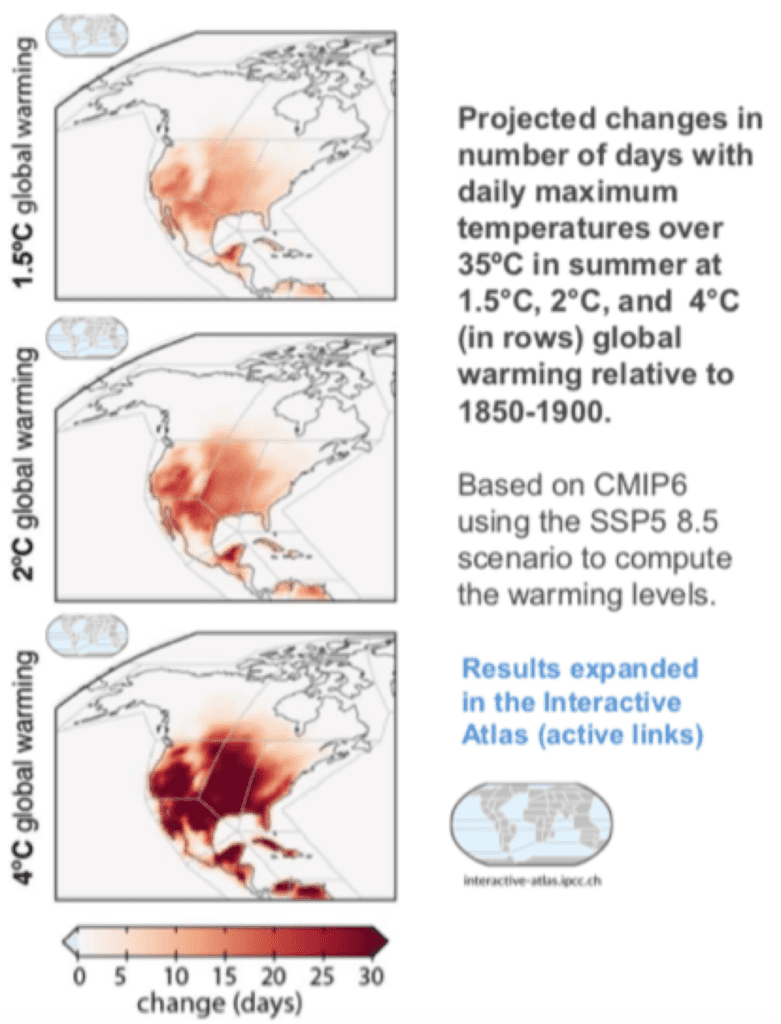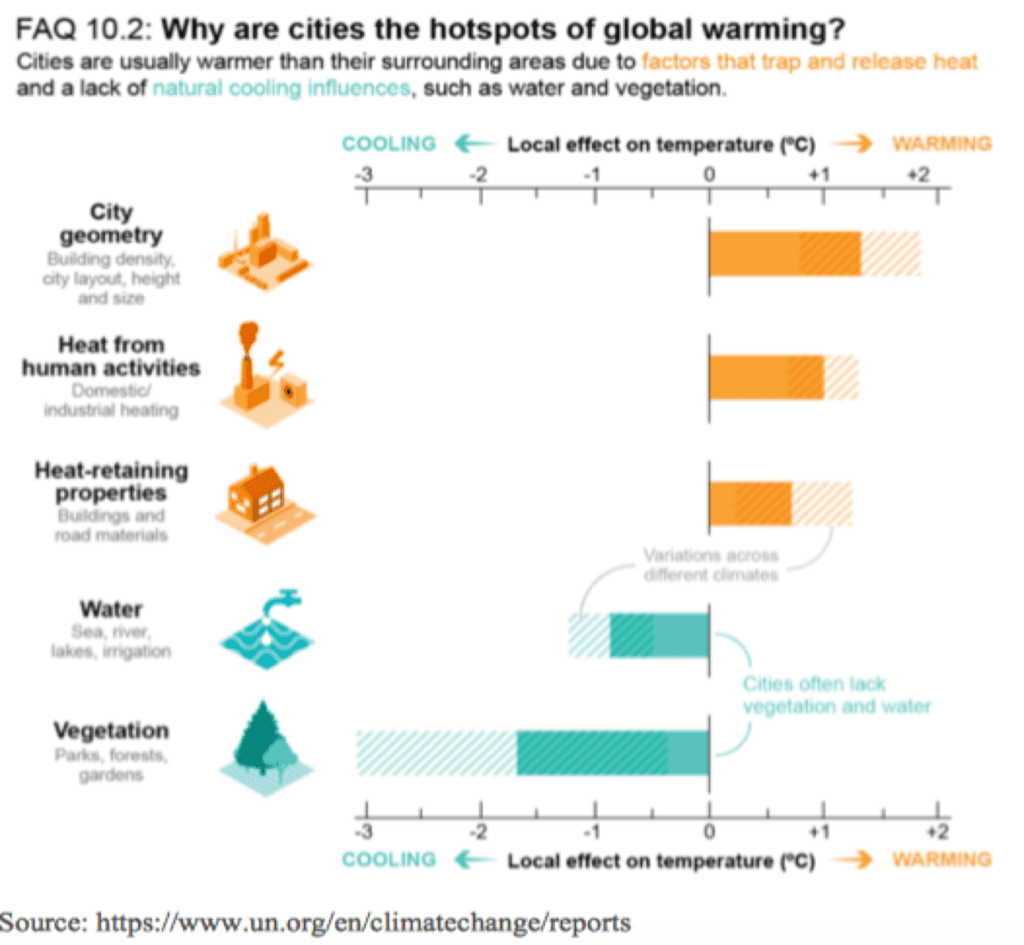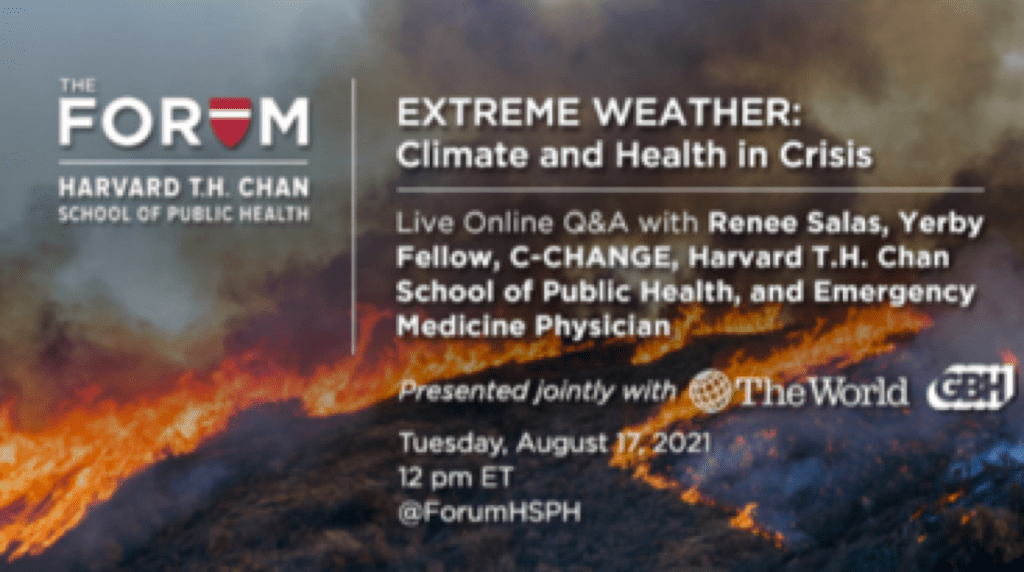Daniel Salzler No. 1110
EnviroInsight.org Four Items August 13, 2021
—————Feel Free To Pass This Along To Others——————
If your watershed is doing something you would like others to know about, or you know of something others can benefit from, let me know and I will place it in this Information newsletter.
If you want to be removed from the distribution list, please let me know.
Please note that all meetings listed are open.
Enhance your viewing by downloading the pdf file to view photos, etc. The
attached is all about improving life in the watershed. If you want to be removed from the distribution list, please let me know. Please note that all meetings listed are open.
Enhance your viewing by downloading the attached pdf file to view photos, etc.
The attached is all about improving life in the watershed.
Read this newsletter at EnviroInsight.org
1. U.N. Report On Climate Change 2021. Climate change is widespread, rapid and intensifying. That is the key finding of the latest scientific report from the Intergovernmental Panel on Climate Change (IPCC). It finds changes in the Earth’s climate in every region and across the whole climate system. Many changes are unprecedented in thousands, if not hundreds of thousands of years.

Some, such as continued sea-level rise, are irreversible over hundreds to thousands of years. The report points to strong and sustained reductions in emissions of carbon dioxide and other greenhouse gases to limit climate change. Benefits for air quality would come quickly, while global temperatures would take 20-30 years to stabilize. The report, issued by the IPCC’s Working Group I and approved by 195 member governments, is then first in a series leading up to the 2021 IPCC Sixth Assessment Report. It includes a closer look at the regional dimensions of climate change and builds on advances in attributing specific weather and climate events to climate change.
Common regional changes
North and Central America (and the Caribbean) are projected to experience climate changes across all regions, with some common changes and others showing distinctive regional patterns that lead to unique combinations of adaptation and risk-management challenges. These shifts in North and Central American climate become more prominent with increasing greenhouse gas emissions and higher global warming levels.
Temperate change (mean and extremes) in observations in most regions is larger than the global mean and is attributed to human influence. Under all future scenarios and global warming levels, temperatures and extreme high temperatures are expected to continue to increase (virtually certain) with larger warming in northern subregions.
Relative sea level rise is projected to increase along most coasts (high confidence), and are associated with increased coastal flooding and erosion (also in observations). Exceptions include regions with strong coastal land uplift along the south coast of Alaska and Hudson Bay.
Ocean acidification (along coasts) and marine heatwaves (intensity and duration) are projected to increase (virtually certain and high confidence, respectively).
Strong declines in glaciers, permafrost, snow cover are observed and will continue in a warming world (high confidence), with the exception of snow in northern Arctic (see overleaf).
Tropical cyclones (with higher precipitation), severe storms, and dust storms are expected to become more extreme (Caribbean, US Gulf Coast, East Coast, Northern and Southern Central America) (medium confidence).

Central and Western North America (CNA and WNA)

- Increases in drought and fire weather in WNA and CNA in observations and will continue to increase in the future particularly at higher warming levels (high confidence, but medium confidence for fire weather in CNA)
- Projected increase in extreme precipitation (very likely)
- Projected increase in river and pluvial flooding (medium confidence)
- Projected increases in precipitation in northern part of CNA in winter (medium confidence).

Air pollution
A warmer climate is expected to increase surface ozone by a few parts per billion over polluted regions, depending on ozone precursor levels (medium to high confidence).
- There is medium confidence that climate driven changes to meteorological conditions generally favor extreme air pollution episodes in heavily polluted environments, though with strong regional and metric dependencies.
Common projections
- Future urbanization will amplify the projected air temperature change in cities regardless of the characteristics of the background climate, resulting in a warming signal on minimum temperatures that could be as large as the global warming signal (very high confidence).
- Compared to present day, large implications are expected from the combination of future urban development and more frequent occurrence of extreme climate events, such as heatwaves, with more hot days and warm nights adding to heat stress in cities (very high confidence).
- Impact assessments and adaptation plans in cities require high-spatial-resolution climate projections along with models that represent urban processes, ensemble dynamical and statistical downscaling, and local-impact models.

2. Five Gross Things That Happen When You Don’t Wash Your Sheets Enough. With a million things to do in a day, from making it to the gym before work to squeezing in some wine and Netflix before bed, who has time to make the bed every day, let alone wash their sheets every week?
If you’re guilty of letting too much time pass before washing your bedding, you might want to reconsider skipping that chore. Because if you don’t, and you FIND yourself sleeping on dirty sheets night after night, you’re going to have to deal with some seriously icky side effects.
1. Breakouts. Pass out with your makeup on too many nights in a row? You’re doing a disservice to your face (think dry skin, early signs of aging, inflammation, and —fun! — infections) and your bed. “Not only will you get stains everywhere, but bacteria can start to build up in the fibers, which can cause annoying whiteheads and patchy pimples, or exacerbate already existing acne — even if you have cleaned your skin,” says Dr. Elizabeth Tanzi, director of Capital Laser and Skin Care. Tanzi suggests washing your face and body with a good cleanser before bed in addition to washing your sheets every seven to 10 days.
2. Skin Irritation or Eczema. “In addition to attracting bacteria, dirty sheets rub against your skin while you sleep — and that friction can lead to skin irritation,” says Dr. Joshua Zeichner, a NYC-based dermatologist. Self-treating with greasy ointments or heavy creams can actually add to the problem, because those products are harder to absorb and will transfer to your linens, where they’ll stay even longer, putting you at risk for more bacteria. If you need to treat a skin condition like eczema, Zeichner advises speaking to your dermatologist about medications that won’t rub off and can be quickly (and fully) absorbed, so as to not worsen the germy wasteland that is your bed.
3. Fungal or Bacterial Infections. All those night sweats don’t just evaporate, you know — in fact, sweat is just one reason beds can be prime places for fungi to grow. One type of mold, Cladosporium, grows on damp mattresses and can lead to asthma, pneumonia, and a fungal infection called Onychomycosis, which can cause skin lesions and crumbling toenails (vom).
Even worse, “several icky infections or rashes can be transferred through dirty bedding, such as Tinea Cruris (a fungal infection that affects the skin on the genitals, inner thighs, and buttocks — AKA jock itch), Tinea Versicolor (a fungal infection that causes small, discolored patches of skin), or the tough-to-treat ‘super bug’ Methicillin-resistant Staphylococcus aureus, or MRSA, caused by a type of staph bacteria that’s resistant to most antibiotics,” says Cricco.
A study executed by mattress company Amerisleep this past August revealed the nightmare-inducing statistic that sheets left unchanged for even one week have 24,631 more bacteria than a bathroom doorknob.
According to https://www.kokilabenhospital.com/health/healthtip/wash-your-bedsheets-weekly.html, Dead skin cells, sweat, saliva, and other bacteria accumulated on your bed sheets may lead to various bacterial or fungal skin infections. Unwashed bed sheets in one week harbour 17,000 times more bacteria than a toilet seat. Wash your bed sheets regularly with soap and water.
4. Dust Mites. The pesky mites — which are part of the spider family and feed on flakes of skin that you can shed in your sleep — accumulate in any location that isn’t regularly cleaned. In fact, there are probably around 1.5. million in your bed each night. And they’ll leave their mark, in the form of welts on your neck, face, arms, and upper body, or problematic and tough-to-cure breathing issues. The longer you wait between washings, the harder it is to truly get rid of mites — or, even worse, bed bugs. Wash regularly, says Lu Xiong, co-founder of sustainable bedding brand Flaneur, “and remember to store linens in a cool, dry place away from moisture and light to avoid any bacterial build-up.”
5. Allergies. Unsurprisingly, bacteria and dust mites can cause or worsen allergies, targeting a weakened immune system.”The three main things you want to avoid on your bedding are dust mites, mold, and mildew, since they activate allergies or worsen existing ones,” says Dr. Carl Cricco, co-founder of the snuggL, a new L-shaped pillow that helps prevent back pain. Invest in bedding made from hypoallergenic materials, which wick away warm moisture so mold and mites can’t breed. Washing your linens will kill any bacteria that’s already on them, but make sure to replace synthetic pillows every two to three years and a down or feather pillow every five to six years so bacteria or bugs don’t have a chance to build up. You can also wash most down or synthetic pillows as well — just make sure to check the care label before doing so.
3. Harvard T.H. Chan School of Public Health.. Tuesday, August 17, 2021

Extreme Weather:
Live stream on Facebook, YouTube, and The Forum site, Tuesday, August 17, 2021, 12pm ET
There is no registration required to watch the event online.
Send questions for the panelists in advance or during the Q&A: theforum@hsph.harvard.edu or post them to Facebook @ForumHSPH.
We will post the video later on demand on:
From major wildfires, to deadly heat, to massive flooding, the U.S., Europe, and elsewhere have experienced extreme weather this summer, costing lives and exacerbating health conditions and disparities. In this live-streamed Q&A, Renee Salas, emergency medicine physician and Yerby Fellow at the Center for Climate, Health, and the Global Environment (C-CHANGE) at the Harvard T.H. Chan School of Public Health, will describe how extreme weather impacts health and why some groups are particularly at risk. Join Dr. Salas and The World’s Carolyn Beeler online as they explore the deepening crisis at the intersection of climate change and health. Email your questions to theforum@hsph.harvard.edu or post your questions to Facebook @ForumHSPH or @prithewor.
4. Navajo Safe Water Video A new documentary, “Working Together for a Better Future,” highlights the efforts of the Water Access Coordination Group (WACG) to provide water services to the Navajo Nation. Created in April 2020, WACG is a coalition of 20 entities led by the Navajo Nation and the Indian Health Service.

According to Dr. Karletta Chief, Associate Professor and Extension Specialist in the Department of Environmental Science at UArizona, WACG “is an excellent model that supports collaboration with Navajo Nation entities so that we can collectively bring our resources and our data and our minds together to address a pressing need,especially during this pandemic, with the lack of access to water.” This 23-minute video offers interviews with coalition participants and depicts the quick mobilization and emergency response deployed to bring safe water to the Navajo Nation during the COVID-19 pandemic.
To help tribal members without access to running water follow CDC handwashing guidelines, WACG launched efforts to deliver portable handwashing stations to 500 Navajo families in need. In addition, the Indian Health Service used funding from the CARES Act to install 59 watering points on the Navajo reservation and distributed 37,000 storage containers with 3.5 million water disinfection tablets for people to haul safe water to their homes. While most of those efforts are transitional, long-term solutions have been sought out. Large water cisterns have been placed underground for residents to pump and receive fresh running water in their bathrooms and kitchens, and new septic tanks have been connected by the Navajo Engineering and Construction Authority. Nikki Tulley, PhD Student, UArizona Department of Environmental Science, who was also interviewed in the video, hopes to keep collaborating and taking into consideration feedback from residents to improve and adjust water access efforts deployed on the Navajo Nation. This video was funded by Agnese Nelms Haury Program in Environment and Social Justice at the UArizona.
Copyright: EnviroInsight.org 2021
